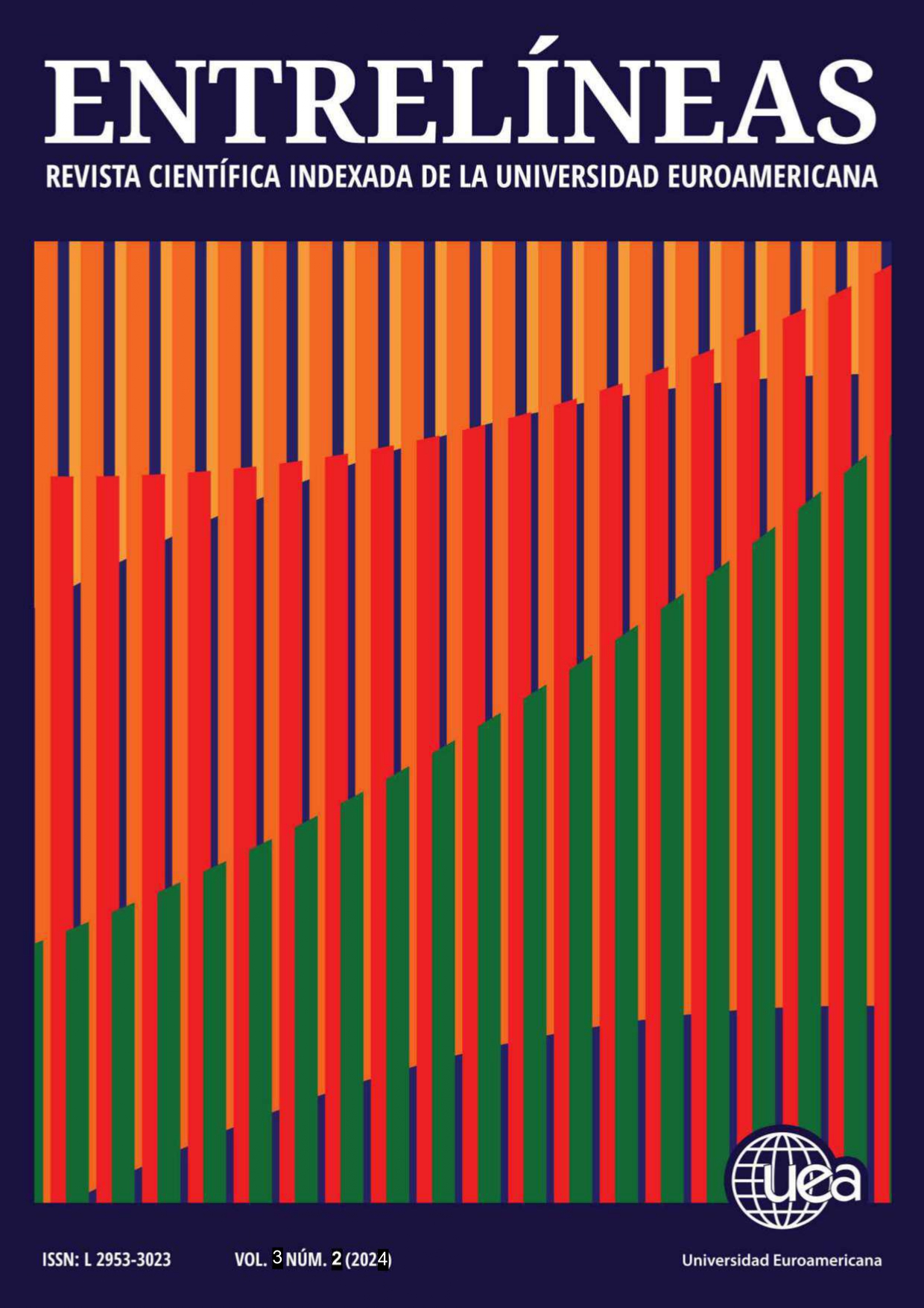Marketing social para minimizar daños ambientales, utilizando las 4P
DOI:
https://doi.org/10.56368/Entrelineas322Palabras clave:
marketing, responsabilidad social, cambio social, medio ambiente, 4P del marketingResumen
En los últimos años, se ha observado un creciente interés por integrar las ciencias sociales en iniciativas ambientales a través del marketing, con un enfoque en facilitar y estimular los intercambios de valor. Con los avances que se han realizado desde la perspectiva del marketing empresarial para desarrollar modelos que influyan en los comportamientos humanos perjudiciales para el medio ambiente, el marketing social ambiental emerge como un componente esencial en la búsqueda de estos objetivos. Para definir el uso del marketing social en la mitigación de los daños ambientales utilizando las 4P, se llevó a cabo un estudio documental que examinó cómo se aplican las teorías del marketing social, así como las 4P identificadas por Wood, en investigaciones y campañas reales relacionadas con el medio ambiente. Los resultados revelaron el potencial para desarrollar programas efectivos y sostenibles que fomenten cambios positivos en la sociedad y el medio ambiente. Entre los resultados se destacó la importancia de la promoción continua para sostener los cambios de comportamiento a largo plazo, concluyendo que el reposicionamiento del marketing social representa una oportunidad real para abordar de manera más efectiva los desafíos ambientales, promoviendo comportamientos sostenibles y contribuyendo a la protección del medio ambiente.
Descargas
Referencias
Cismaru, M., Lavack, A. M. & Markewich, E. (2009). Social marketing campaigns aimed at preventing drunk driving: A review and recommendations. International Marketing Review, 26(3), 292-311. https://doi.org/10.1108/02651330910960799
Cook, T. D. & Reichardt, Ch. S. (1986). Método cuantitativo y cualitativo en investigación evaluativa, Edición Morata S.L.
Corrigan, P. W. (2011). Best practices: Strategic stigma change (SSC): Five principles for social marketing campaigns to reduce stigma. Psychiatric Services, 62(8), 824-826. https://doi.org/10.1176/ps.62.8.pss6208_0824
Evans, W. D. (2006). How social marketing works in health care. British Medical Journal, 332(7551), 1207-1210. https://doi.org/10.1136%2Fbmj.332.7551.1207-a
Evans, W. D. (2008). Social marketing campaigns and children's media use. The Future of Children, 181-203. https://doi.org/10.1353/foc.0.0009
Evans, W. D., Pattanayak, S. K., Young, S., Buszin, J., Rai, S., & Bihm, J. W. (2014). Social marketing of water and sanitation products: a systematic review of peer-reviewed literature. Social Science & Medicine, 110, 18-25. https://doi.org/10.1016/j.socscimed.2014.03.011
Friedman, A. L., Allison, L., Kachur, R. E., Noar, S. M. & McFarlane, M. (2016). Health communication and social marketing campaigns for sexually transmitted disease prevention and control. Sexually Transmitted Diseases, 43, S83-S101. https://doi.org/10.1097/OLQ.0000000000000286
Goi, C. L. (2009). A review of marketing mix: 4Ps or more? International journal of marketing studies, 1(1), 2-15. http://dx.doi.org/10.5539/ijms.v1n1p2
Green, K. M., Crawford, B. A., Williamson, K. A. & DeWan, A. A. (2019). A meta-analysis of social marketing campaigns to improve global conservation outcomes. Social Marketing Quarterly, 25(1), 69-87. https://psycnet.apa.org/doi/10.1177/1524500418824258
Hastings, G. & Saren, M. (2003). The critical contribution of social marketing: theory and application. Marketing theory, 3(3), 305-322. https://doi.org/10.1177/147059310333005
Jaramillo Echeverri, L.G. (2003). ¿Qué es epistemología? Mi mirar epistemológico y el progreso de la ciencia, Cinta de Moebio 18, 1-7. https://dialnet.unirioja.es/servlet/articulo?codigo=858711
Johnson, S. L., Bellows, L., Beckstrom, L. & Anderson, J. (2007). Evaluation of a social marketing campaign targeting preschool children. American journal of health behavior, 31(1), 44-55. https://doi.org/10.5555/ajhb.2007.31.1.44
Kotler, P. & Zaltman, G. (1971). Social marketing: an approach to planned social change. Journal of Marketing, 35, July, 3-12. https://doi.org/10.1177/002224297103500302
Kotler, P., Roberto, N. & Lee, N. (2002). Social marketing: improving the quality of life. Sage.
Lefebvre, C. (2007). The new technology: The consumer as participant rather than target audience. Social Marketing Quarterly, 13(3), 31–42. https://doi.org/10.1080/15245000701544325
Luca, N. R. & Suggs, L. S. (2013). Theory and model use in social marketing health interventions. Journal of health communication, 18(1), 20-40. https://doi.org/10.1080/10810730.2012.688243
Maibach, E. (1993). Social marketing for the environment: Using information campaigns to promote environmental awareness and behavior change. Health promotion international, 8(3), 209-224. https://doi.org/10.1093/heapro/8.3.209
Padrón, J. (2007). Tendencias epistemológicas de la i investigación científica en el siglo. XXI., Epistemología de las Ciencias Sociales 28, 1-28. https://dialnet.unirioja.es/descarga/articulo/2284734.pdf
Peattie, K. & Peattie, S. (2009). Social marketing: a pathway to consumption reduction? Journal of business research, 62(2), 260-268. https://doi.org/10.1016/j.jbusres.2008.01.033
Ramos, C. A. (2015). Los paradigmas de la investigación científica. Avances en Psicología, 23(1), 9-17. https://doi.org/10.33539/avpsicol.2015.v23n1.167
Rondón García, Y. (2009). La evolución de los paradigmas en las ciencias sociales y su incidencia en los procesos gerenciales, Saber, 21 (2), 188-194. https://www.redalyc.org/pdf/4277/427739440012.pdf
Salazar, G., Mills, M. & Veríssimo, D. (2019). Qualitative impact evaluation of a social marketing campaign for conservation. Conservation Biology, 33(3), 634-644. https://doi.org/10.1111/cobi.13218
Sampogna, G., Bakolis, I., Evans-Lacko, S., Robinson, E., Thornicroft, G. & Henderson, C. (2017). The impact of social marketing campaigns on reducing mental health stigma: Results from the 2009–2014 Time to Change programme. European Psychiatry, 40, 116-122. https://doi.org/10.1016/j.eurpsy.2016.08.008
Tapp, A., & Spotswood, F. (2013). From the 4Ps to COM-SM: reconfiguring the social marketing mix. Journal of Social Marketing, 3(3), 206-222. https://doi.org/10.1108/JSOCM-01-2013-0011
Truong, V. D. (2014). Social marketing: A systematic review of research 1998–2012. Social Marketing Quarterly, 20(1), 15-34. https://doi.org/10.1177/1524500413517666
Ventura León, J.L. (2017). La importancia de reportar la validez y la confiabilidad en los instrumentos de medición: comentarios a Arancibia et al, Medica Chilena 145, 818-820. http://dx.doi.org/10.4067/s0034-98872017000700955
Weinreich, N. K. (2006). What is social marketing. Weinreich Communications, 10, 1-3. https://www.social-marketing.com/whatis.html
Wong, F., Huhman, M., Asbury, L., Bretthauer-Mueller, R., McCarthy, S., Londe, P. & Heitzler, C. (2004). VERB™—a social marketing campaign to increase physical activity among youth. Preventing Chronic Disease, 1(3). http://www.cdc.gov/pcd/issues/2004/jul/04_0043.htm
Wood, M. (2008). Applying Commercial Marketing Theory to Social Marketing: A Tale of 4Ps (and a B). Social Marketing Quarterly, 14(1), 76–85. https://doi.org/10.1080/15245000701856877
Wood, M. (2012). Marketing social marketing. Journal of Social Marketing, 2(2), 94-102. https://doi.org/10.1108/20426761211243937
Descargas
Publicado
Número
Sección
Licencia

Esta obra está bajo una licencia internacional Creative Commons Atribución-NoComercial 4.0.
Usted es libre de:
- Compartir — copiar y redistribuir el material en cualquier medio o formato
- Adaptar — remezclar, transformar y construir a partir del material
- La licenciante no puede revocar estas libertades en tanto usted siga los términos de la licencia
Bajo los siguientes términos:
- Atribución — Usted debe dar crédito de manera adecuada , brindar un enlace a la licencia, e indicar si se han realizado cambios . Puede hacerlo en cualquier forma razonable, pero no de forma tal que sugiera que usted o su uso tienen el apoyo de la licenciante.
- NoComercial — Usted no puede hacer uso del material con propósitos comerciales .
- No hay restricciones adicionales — No puede aplicar términos legales ni medidas tecnológicas que restrinjan legalmente a otras a hacer cualquier uso permitido por la licencia.










